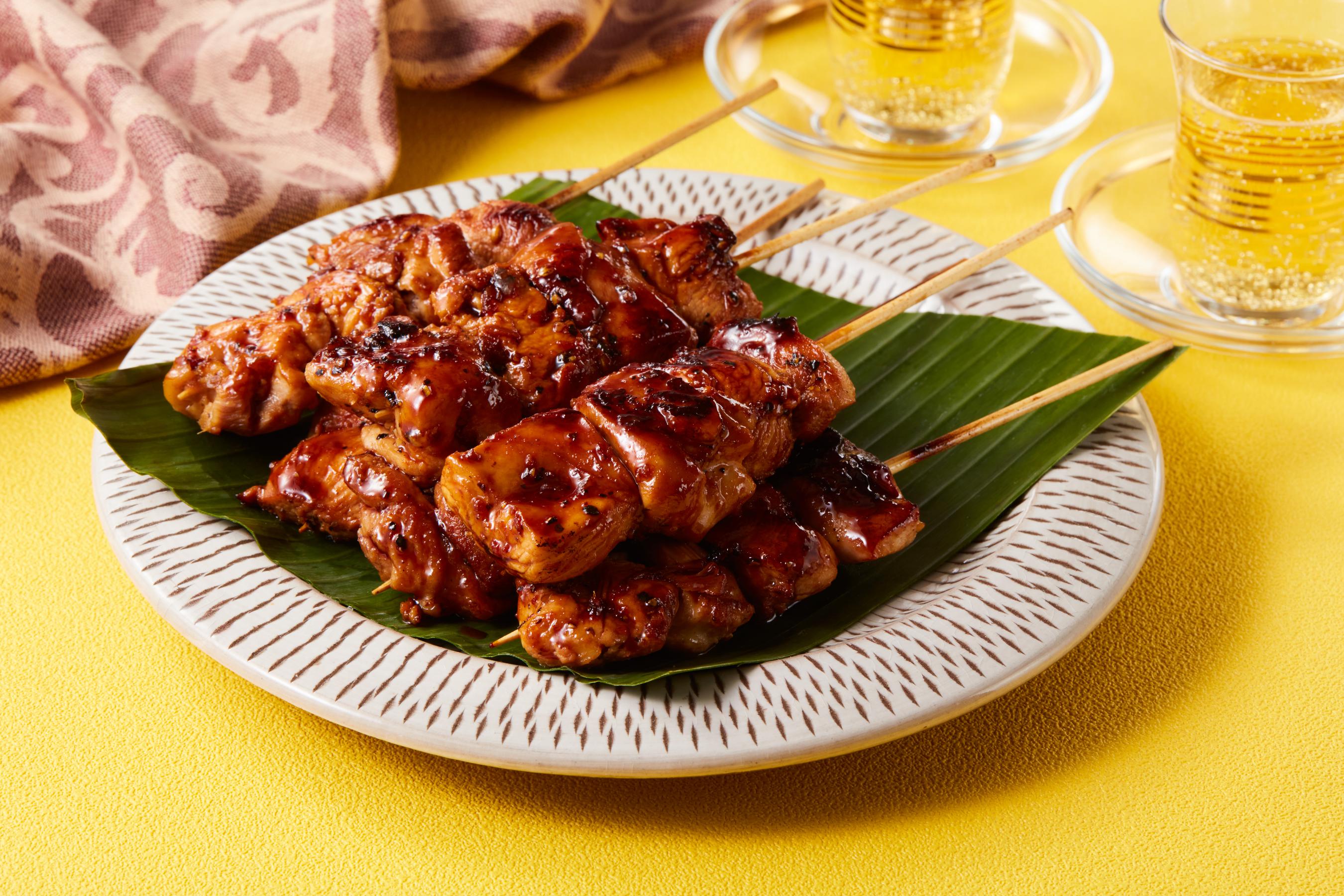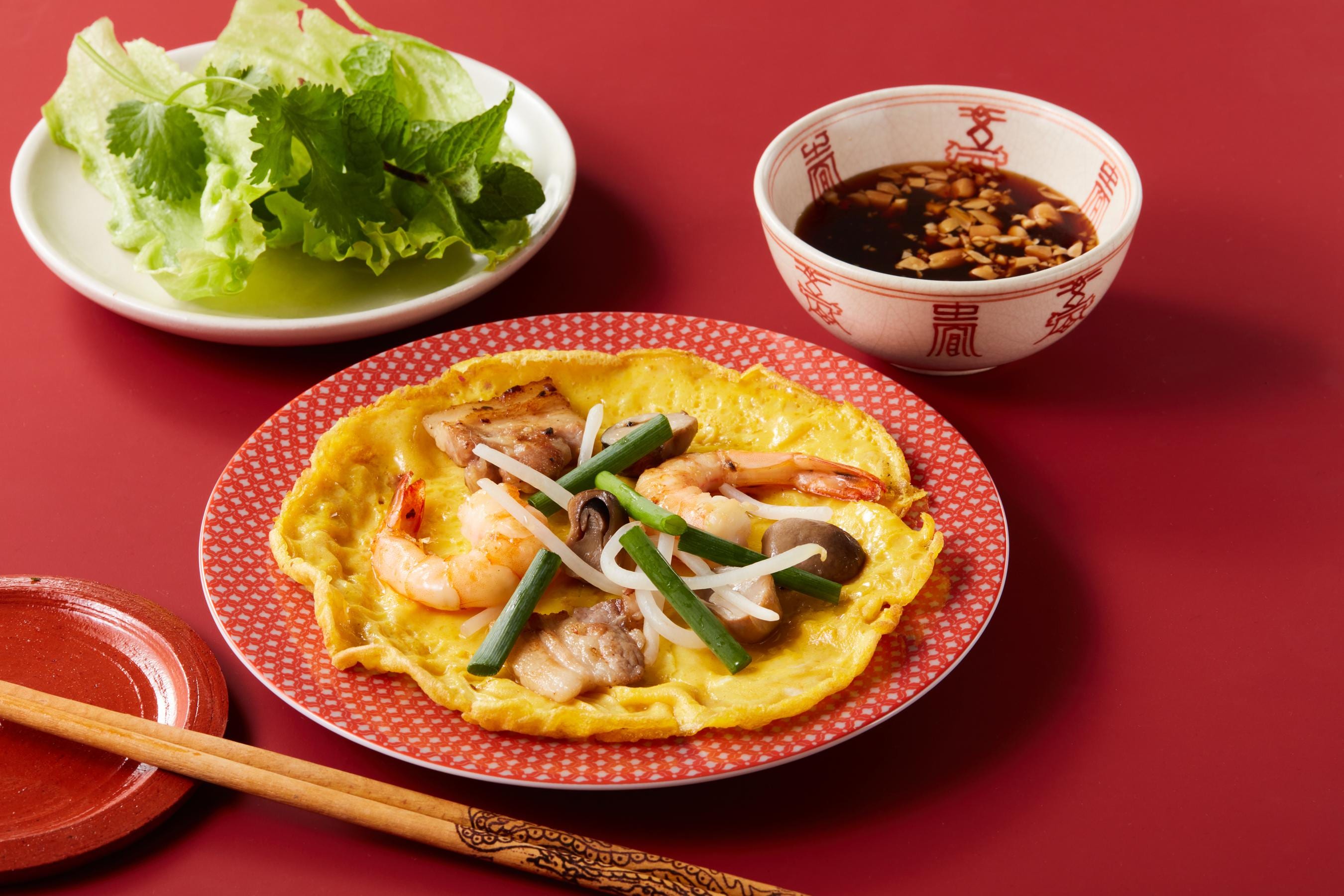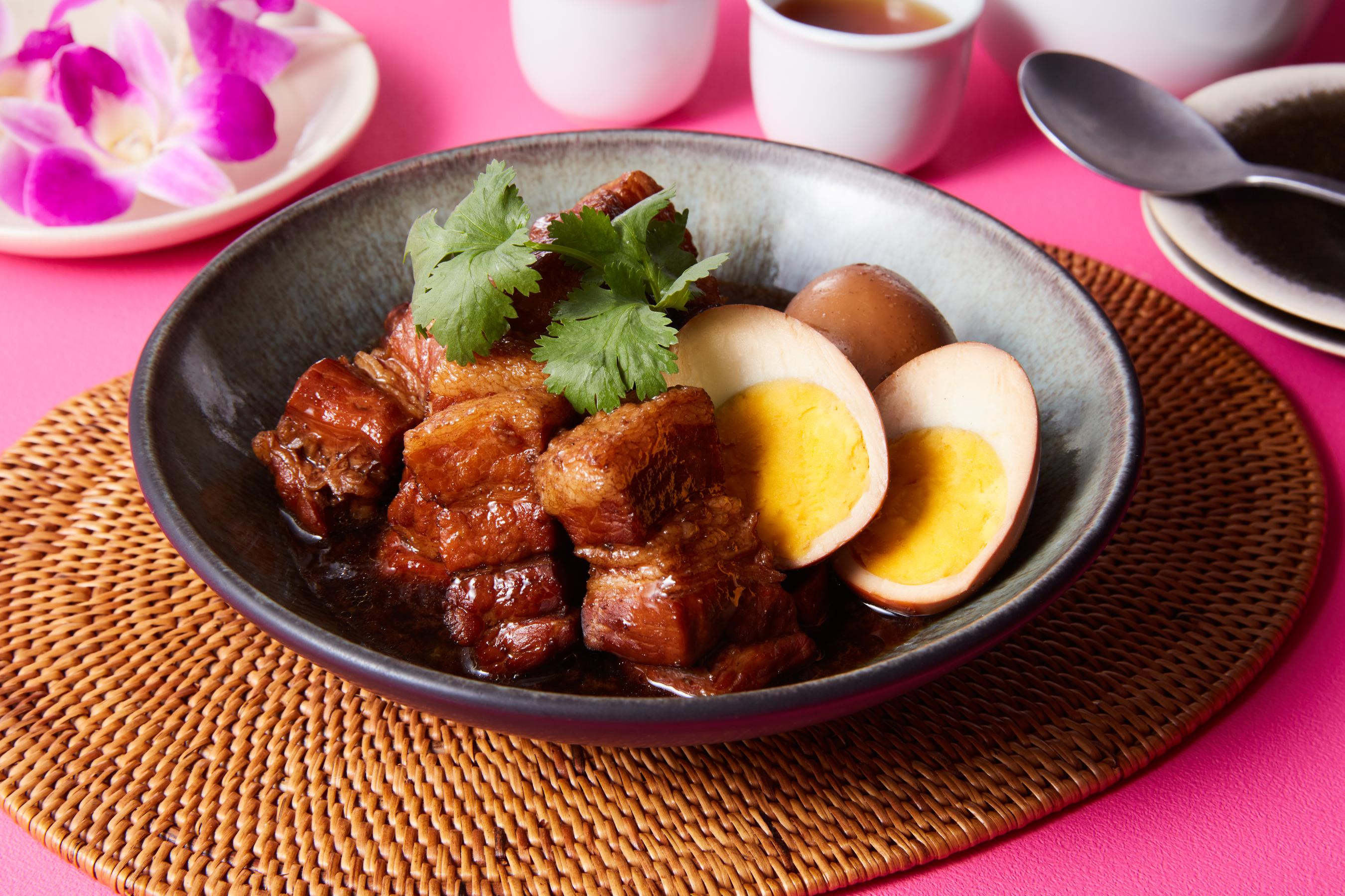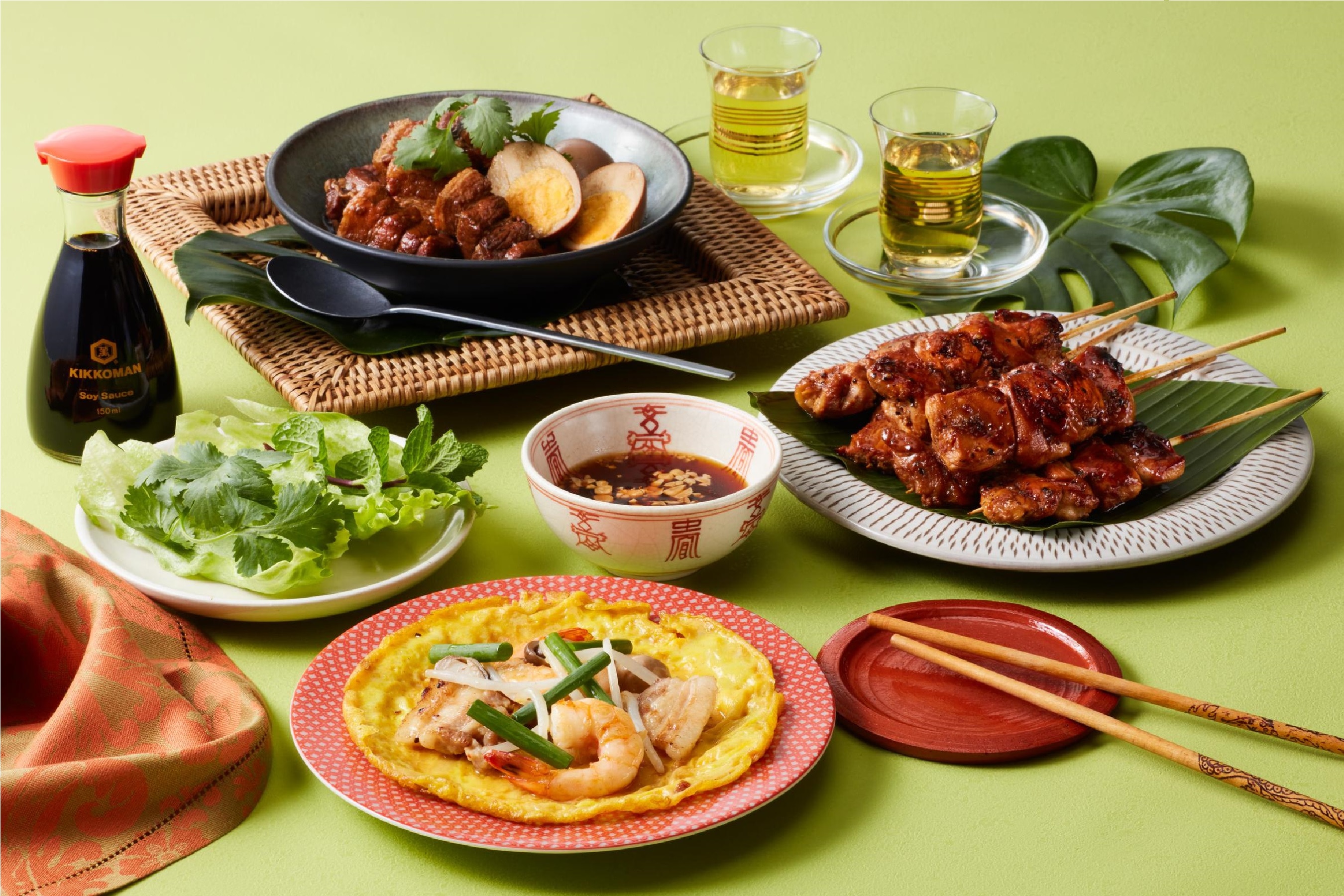
Learn how to use up a 150ml bottle of Kikkoman Soy Sauce by applying three cooking techniques: marinating, drizzling, and simmering!
Cooking tips for mastering soy sauce!
Culinary expert Yurico Aoki, who explores cuisines worldwide, taught us how to use Kikkoman Soy Sauce in Asian cuisine. Kikkoman Soy Sauce's distinctive feature is its ability to complement any ingredient. In addition to using it in its simplest form, there are endless possibilities for its combinations and cooking techniques.
For instance, mixing it with spices, potherbs, fruits, and nuts can create flavorful sauces. These versatile sauces can be used in various ways, such as marinating, simmering, and drizzling. We hope you experiment with the delicious possibilities of soy sauce.
Chicken Kabobs
The spices in the soy sauce-based marinade include coriander powder, chili powder, and black pepper. There’s also garlic, ginger, honey, and lime for a spicy-sweet flavor. It’s made by combining the sauce and chicken in a bowl and thoroughly mixing using tongs. Then, it’s covered to prevent the meat from drying out and refrigerated for approximately two hours. Marinating the meat overnight helps the flavors to meld even more.
Chicken Kabobs
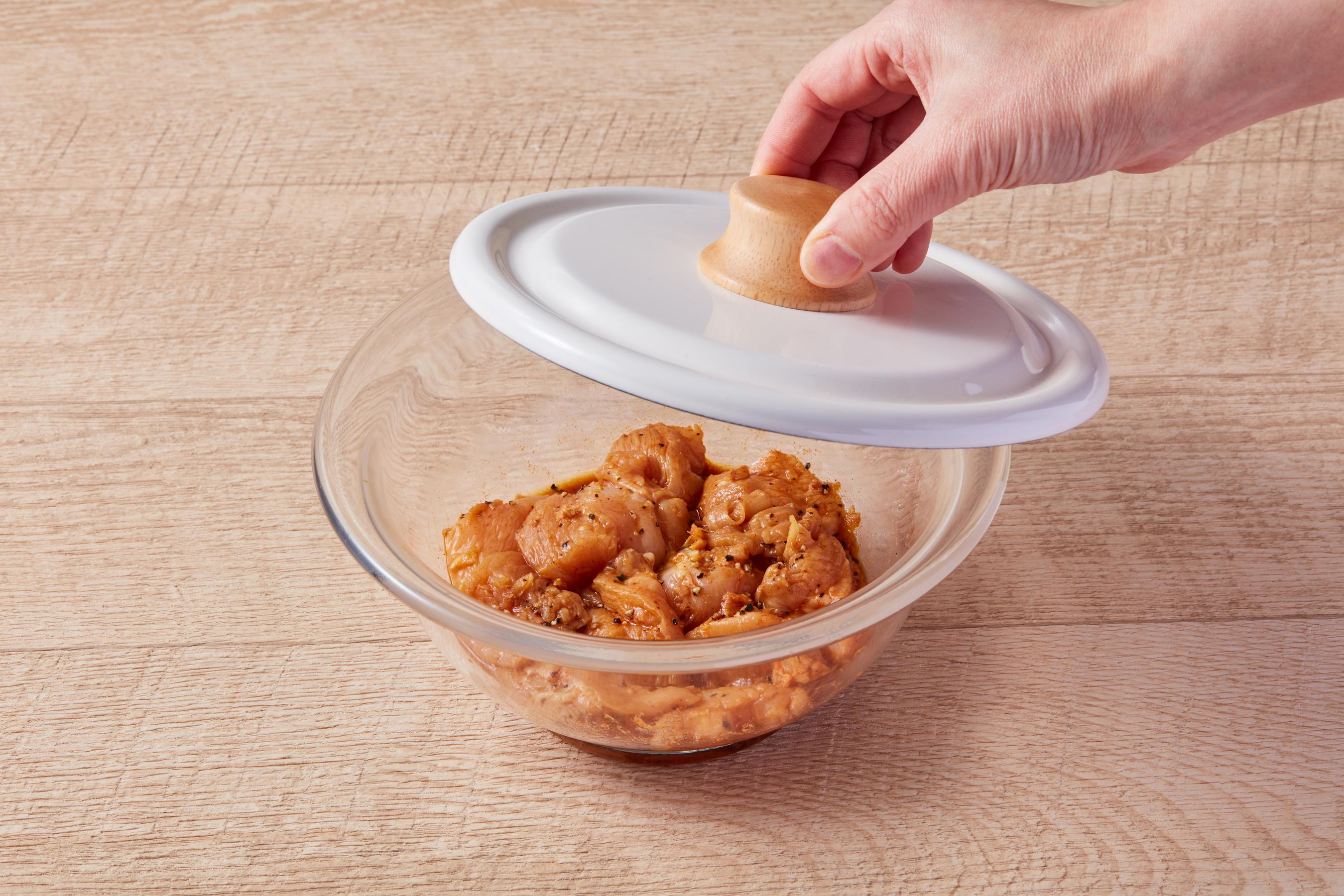
Kabobs, a dish commonly enjoyed in India, Turkey, the Middle East, and other regions, is a dish of marinated meats in various spices. This recipe tones the heat for a simple flavor profile similar to Japanese teriyaki chicken. Before cooking, the chicken is marinated in soy sauce, spices, and aromatics for two hours.
Tips for cooking the chicken
When you grill the marinated chicken, the savory flavor of soy sauce stands out. A tip when grilling is to brush the remaining marinade on the chicken as it cooks, allowing the flavors to penetrate even more. The spicy-sweet flavor is the perfect introduction for those trying Kikkoman Soy Sauce for the first time.
Banh Khoai (Vietnamese Seafood Pancake)
Banh Khoai is a famous dish from Vietnam's Hue region. It's an affordable everyday dish available at restaurants and street stalls. It’s a rice flour-based Vietnamese-style pancake topped with various ingredients and a sweet and savory sauce with peanuts. For this recipe, the sauce includes Kikkoman Soy Sauce, aromatics, peanuts, and sugar. You’ll notice the fresh flavor of the soy sauce shine.
Banh Khoai (Vietnamese Seafood Pancake)
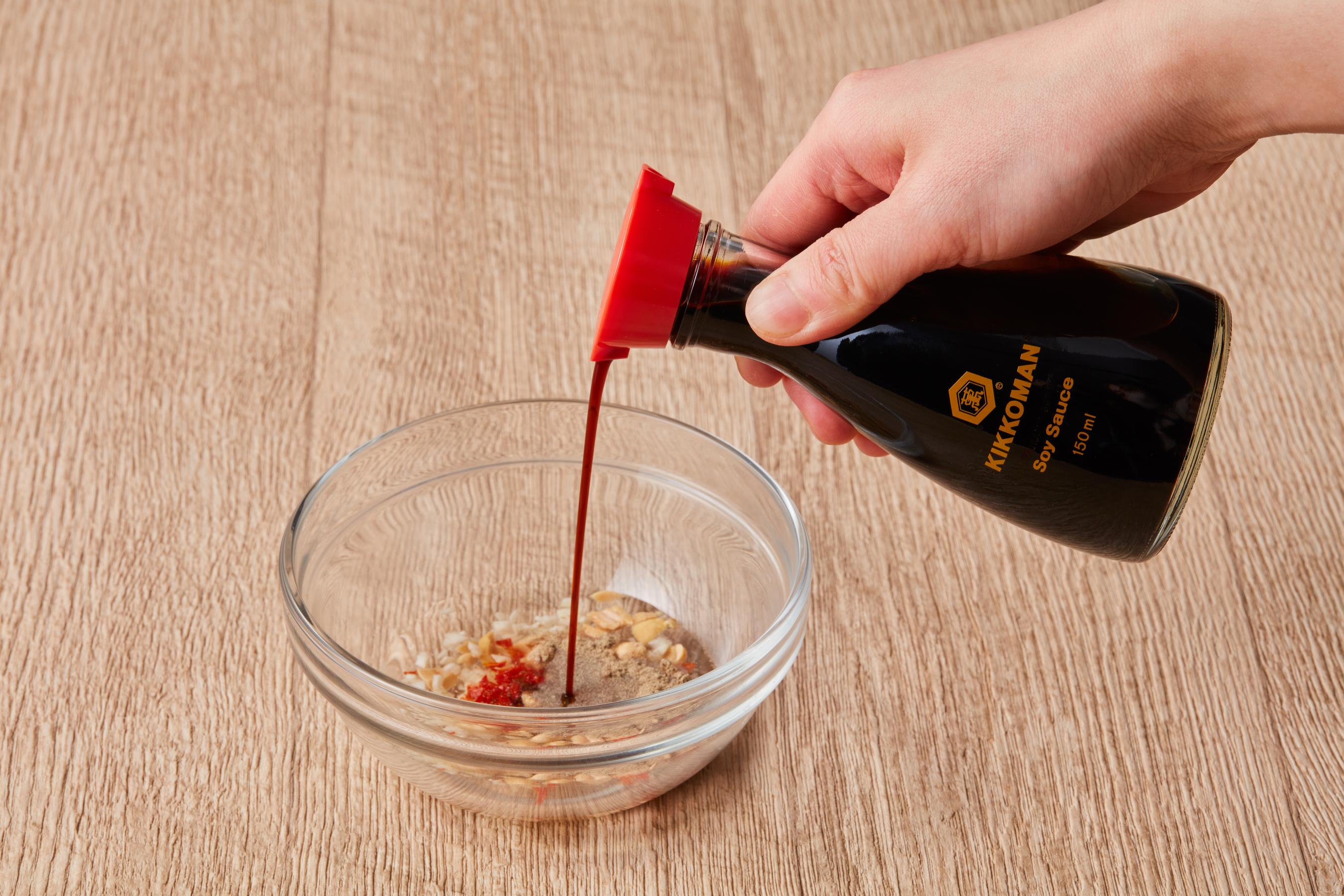
Restaurants create different sauce blends for Banh Khoai. This simple sauce comprises just soy sauce, garlic, peanuts, sugar, and lime. It combines the umami of soy sauce with sweet and tangy flavors and the delightful crunch of peanuts, resulting in a delectable sauce. Kikkoman Soy Sauce has a light consistency, so you can drizzle the sauce with a spoon as you eat.
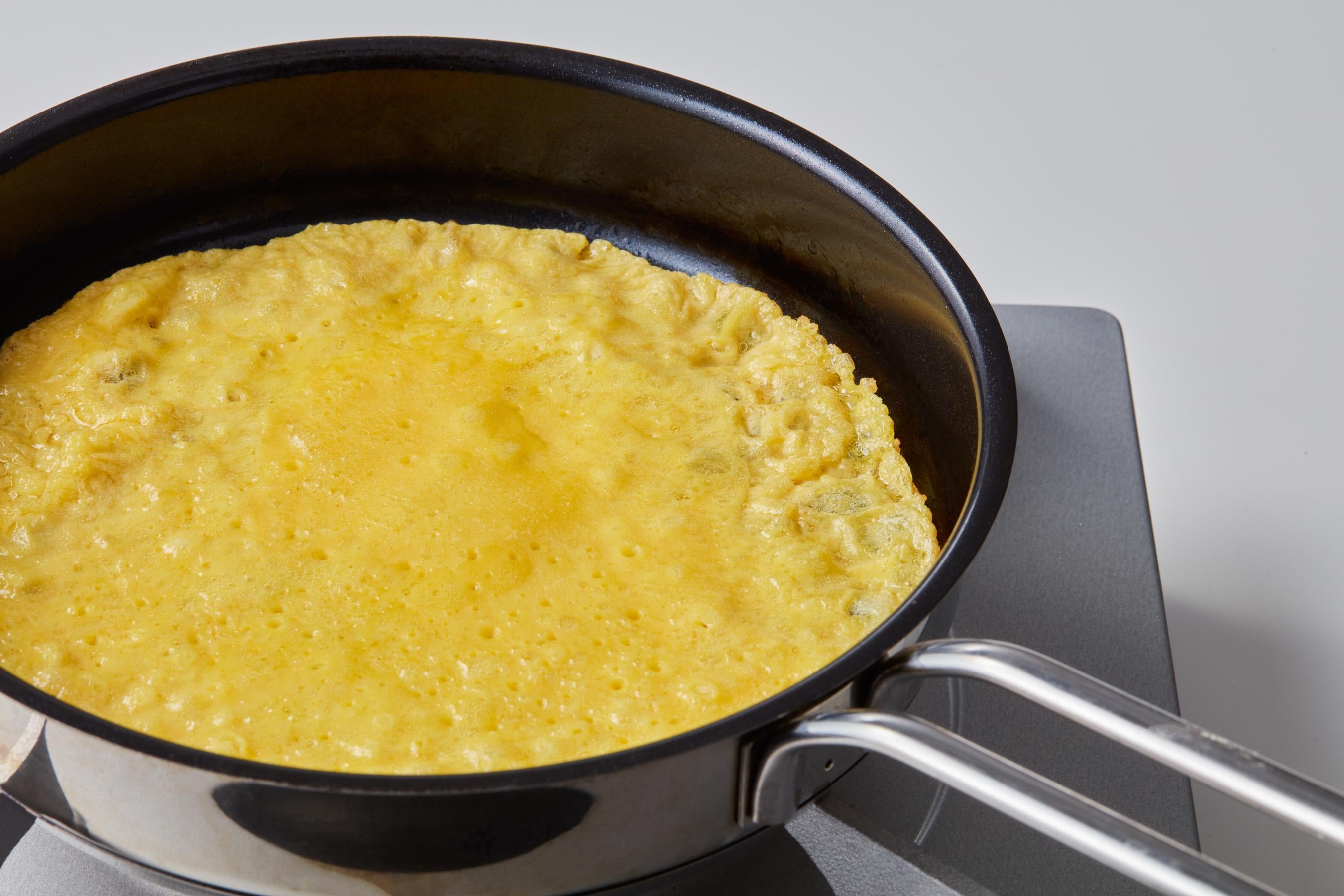
Once the batter looks crispy, put the toppings and cover with a rid
Tips for achieving a crispy exterior and a fluffy interior
When cooking the batter, use a generous amount of oil and cook it over medium heat to achieve a crispy outer layer. Without flipping the pancake, layer the sautéed shrimp, pork, and bean sprouts on top, cover it with a lid, and steam-cook. The inside of the pancake becomes fluffy due to the addition of baking powder to the batter.
Moo Palo (Thai Pork Belly Stew with Eggs)
Moo Palo is a Chinese-influenced Thai home-cooked dish. It's commonly enjoyed at street stalls. A similar dish is also eaten in Japan called "Kakuni" (braised pork belly). The meat is simmered in soy sauce, cilantro root, garlic, cinnamon sticks, star anise, five-spice powder, and other ingredients. It’s a soy sauce-rich dish, where you can relish its delicious flavor and use a substantial amount.
In Thai, "Moo" means pork, and "Palo" refers to a stew made with Chinese spices, such as five-spice powder. A stew with eggs is called "Kai Palo."
Try this recipe
Moo Palo (Thai Pork Belly Stew with Eggs)
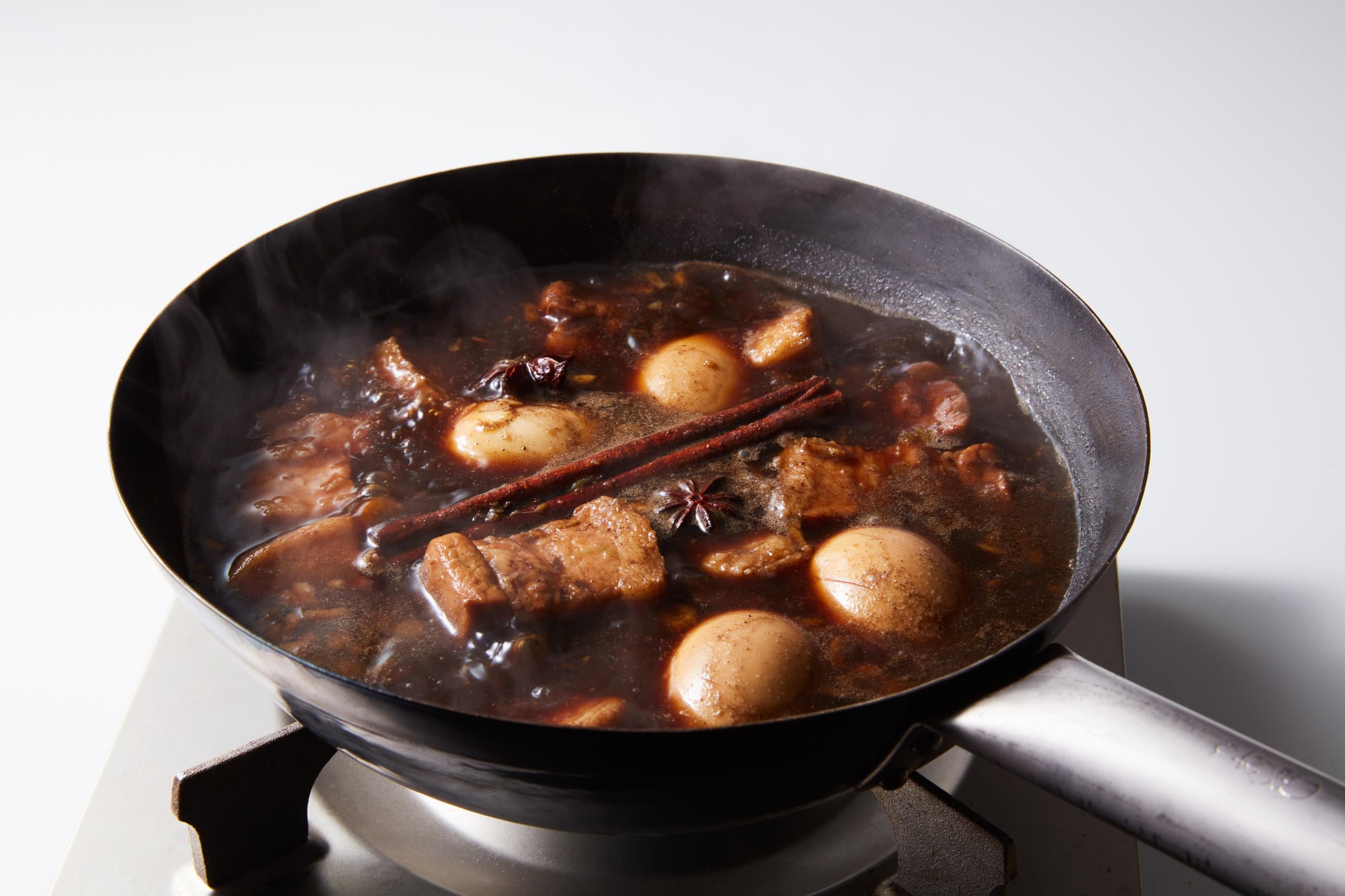
It’s made by simmering the pork belly in a sauce enriched with spices and aromatics with soy sauce for 40-45 minutes. Slow cooking allows the flavors to deeply penetrate the meat, elevating the dish. To shorten the cooking time, you could use a pressure cooker.
Utilize both the leaves and roots of cilantro
Cilantro, widely used in Asian cuisine, is an aromatic herb with a distinct aroma. In Thailand, it's known as "pakchi," while in China, it goes by "shanzhai." For dishes like Moo Palo, the leaves and roots of cilantro are used. The roots are crushed with garlic and white pepper using a mortar and pestle, or a food processor before being added to the simmer. Since the roots have a strong smell, they contribute to the rich and flavorful stew.
Yurico Aoki
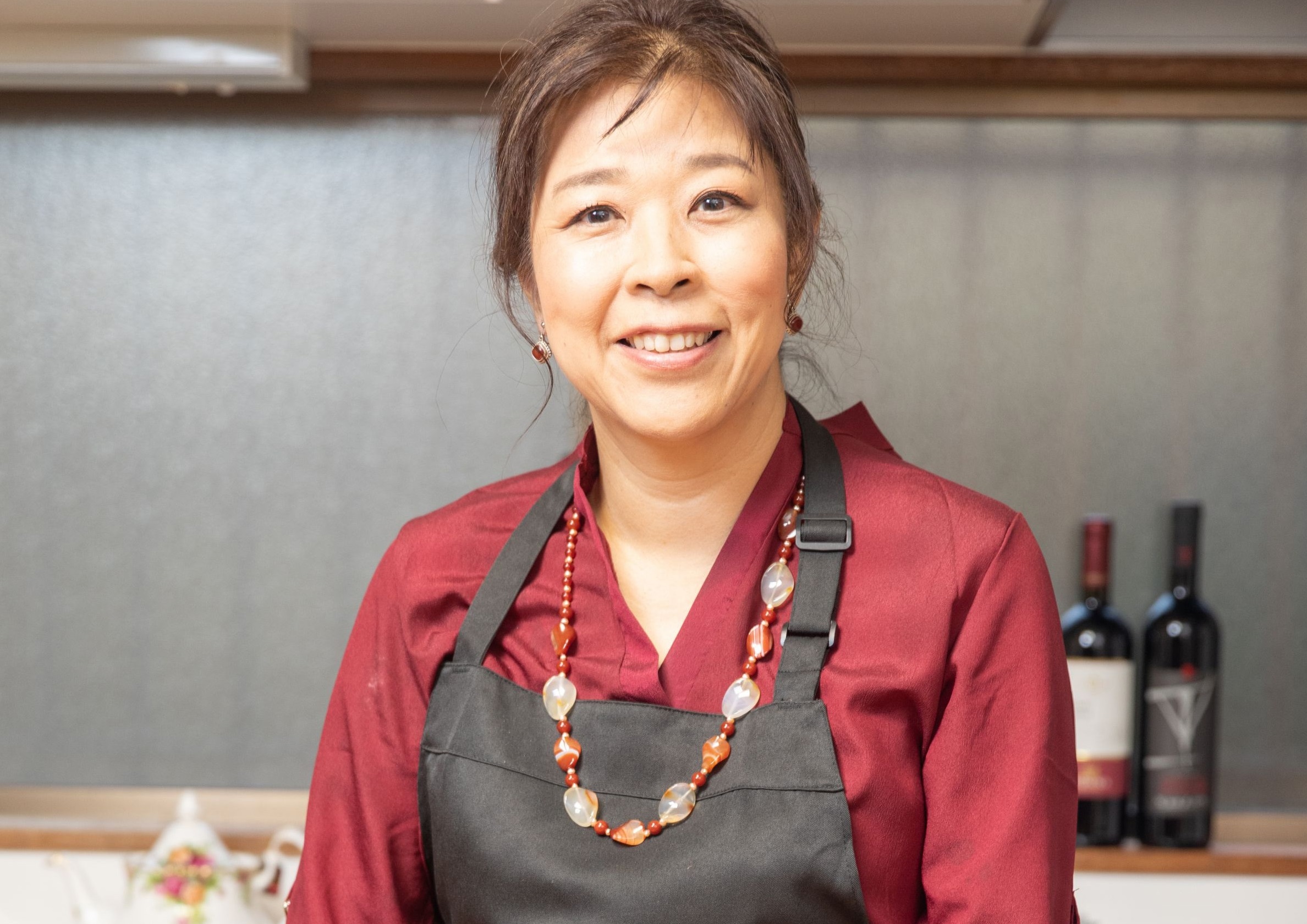
Culinary specialist of international and regional cuisines, and founder of the world cuisine portal called ‘e-food.jp.’. After having been trained at a restaurant in a global hotel chain, she became a licensed chef. She wrote many books, including “Exploring World Cuisines”.
Kikkoman in Southeast Asia
In the Southeast Asian region, Kikkoman Soy Sauce is produced in Singapore. Kikkoman’s technology has made it possible to produce “honjozo” (traditionally brewed) soy sauce in hot and humid areas. Please visit the website below and find a wide variety of products in Southeast Asia!


